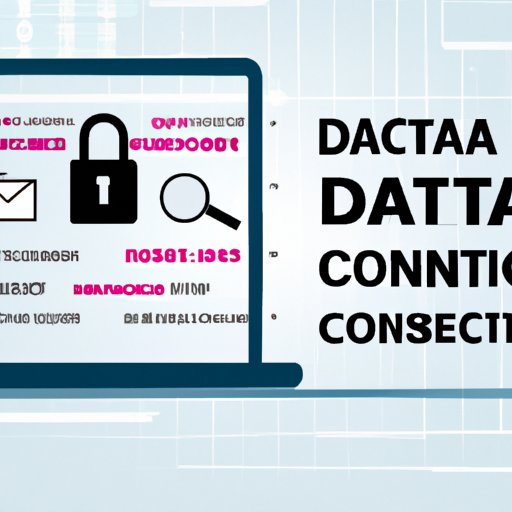Introduction
Data confidentiality is a fundamental security measure that protects sensitive information from unauthorized access. It ensures that only those with legitimate access can view, use or modify the data. In today’s digital world, organizations must adopt appropriate measures to ensure data confidentiality if they are to remain competitive. There are various technologies available to help organizations protect their data from malicious actors.
Encryption
Encryption is one of the most widely used techniques for protecting data. It involves encoding data into a format that is unreadable to anyone without an encryption key. Encryption works by using algorithms to transform plaintext (the original readable form of data) into ciphertext (a scrambled version of the data). To decrypt the ciphertext and make it readable again, the same encryption key must be used.
The main benefit of using encryption is that it makes it extremely difficult for unauthorized users to access the data. Even if someone gains access to the encrypted data, they won’t be able to decipher it without the encryption key. However, there are some drawbacks to using encryption. It can be time consuming and expensive to implement, and it relies on the security of the encryption key, which could be compromised if it is not properly protected.
Tokenization
Tokenization is another method of protecting data. It replaces sensitive data, such as credit card numbers, with a unique identifier known as a token. The token does not contain any of the actual data, so it cannot be used to access the information. Instead, the token acts as a reference to the original data, allowing authorized users to access it when needed.
One of the advantages of tokenization is that it eliminates the need to store sensitive data in a database. This reduces the risk of data breaches and simplifies compliance with regulations such as the Payment Card Industry Data Security Standard (PCI DSS). However, tokenization also has some drawbacks. A token can easily be guessed or cracked, and tokens must be securely stored just like any other sensitive data.
Access Control
Access control is a technique used to limit who can access certain data. It involves setting up rules and restrictions to determine who is allowed to view, edit or delete data. Access control can be implemented through user authentication, which requires users to provide credentials such as a username and password before they can access the data. This ensures that only authorized users can access the data.
The main benefit of access control is that it helps to prevent unauthorized users from accessing sensitive data. It also makes it easier to track who is accessing the data and when. However, access control can be complex to set up and manage, and it relies on users following the rules. If users fail to follow the rules, then the data may still be vulnerable to unauthorized access.
Data Masking
Data masking is a process that obscures sensitive data from unauthorized users. It involves replacing the actual values of the data with fictitious ones, making it difficult for unauthorized users to identify the true values. For example, a social security number might be replaced with a randomly generated number. Data masking can be applied to both structured and unstructured data.
The main benefit of data masking is that it helps to protect sensitive data from unauthorized users. It also makes it easier to comply with data privacy regulations such as the General Data Protection Regulation (GDPR). However, data masking can be time consuming and expensive to implement, and it may not be suitable for all types of data.
Multi-factor Authentication
Multi-factor authentication (MFA) is a security measure that requires users to provide at least two pieces of evidence before they can access data. This could include a combination of a username and password, a biometric scan such as a fingerprint, or a code sent to a mobile device. MFA is often used to protect sensitive accounts such as bank accounts and online shopping sites.
The main benefit of MFA is that it adds an extra layer of security to protect data from unauthorized access. It also makes it easier to track who is accessing the data and when. However, MFA can be inconvenient for users and it may not be suitable for all types of data.
Conclusion
Data confidentiality is essential for protecting sensitive information from unauthorized access. Organizations must take appropriate measures to ensure data confidentiality if they are to remain competitive. There are various technologies available to help organizations protect their data, including encryption, tokenization, access control, data masking and multi-factor authentication. Each technology has its own benefits and drawbacks, so organizations should carefully consider their needs before choosing the best solution for them.
In summary, encryption, tokenization, access control, data masking and multi-factor authentication are all effective tools for ensuring data confidentiality. Organizations should evaluate their needs and select the most appropriate technology for their particular situation. Additionally, organizations should ensure that their chosen technology is regularly updated and monitored to ensure maximum protection of their data.
(Note: Is this article not meeting your expectations? Do you have knowledge or insights to share? Unlock new opportunities and expand your reach by joining our authors team. Click Registration to join us and share your expertise with our readers.)
